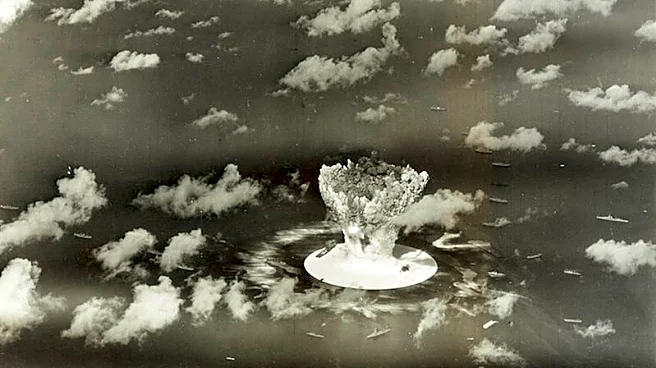What's Happening?
On July 29, 2025, a powerful 8.7-magnitude earthquake struck off the coast of Russia's Kamchatka Peninsula. This seismic event, caused by tectonic activity in the Pacific 'Ring of Fire,' led to tsunami alerts and evacuations in Russia, Japan, and the United
States. The earthquake resulted from the Pacific Plate diving beneath the Okhotsk Plate, causing a sudden vertical displacement of the seafloor and triggering a tsunami. The quake caused significant tremors across the Kamchatka Peninsula and surrounding areas, including the Kuril Islands. Local authorities ordered evacuations in coastal towns, and tsunami sirens were activated as the first waves made landfall in Severo-Kurilsk. Although early reports indicated limited casualties, structural damage and community disruptions were significant.
Why It's Important?
This earthquake highlights the ongoing seismic risks faced by nations along the Pacific 'Ring of Fire,' including Russia, the United States, and Japan. These countries are particularly vulnerable to earthquakes and tsunamis due to their positions on active tectonic boundaries. The event underscores the critical need for preparedness and the importance of early warning systems. The interconnected risks shared by these nations necessitate continued investment in earthquake-resistant infrastructure and public education to mitigate the impact of such natural disasters.
What's Next?
As the region continues to assess the damage, authorities will likely focus on recovery efforts and reinforcing infrastructure to withstand future seismic events. The earthquake serves as a reminder of the importance of maintaining and upgrading disaster preparedness measures, especially as climate change and coastal urbanization increase exposure to such risks.
Beyond the Headlines
The unpredictability of earthquakes makes them difficult to mitigate completely, particularly in remote or heavily populated areas. The event also highlights the need for international cooperation in sharing data and expertise to enhance the accuracy of earthquake monitoring and hazard assessments.















